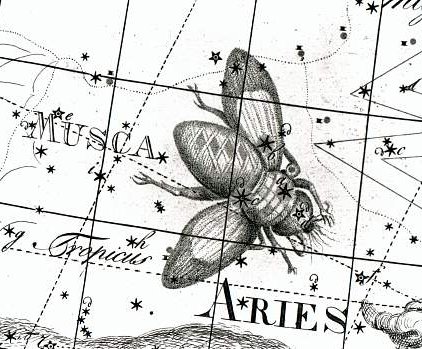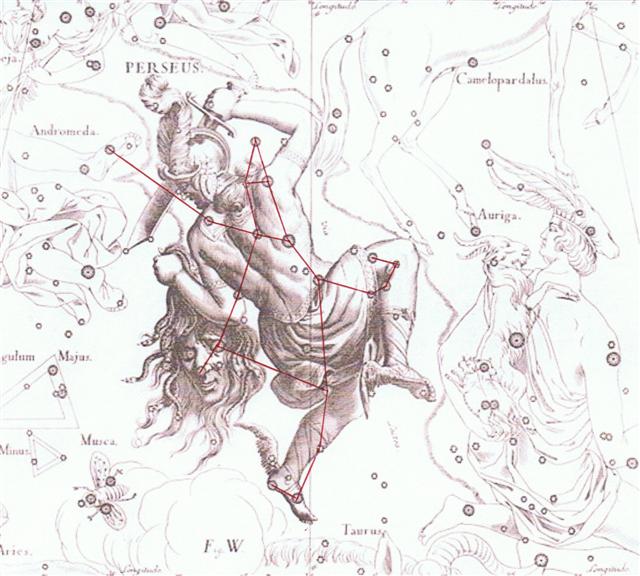2. Between the horns of the Ewe and her tail a Fly descends, presumably a sign of her descending 'manu rere': 
Nowadays Musca is a constellation far down in the south, but among the clouds drawn by Hevelius we can see her in her proper place:
 The triangular shape defined by the eyes and nose of Medusa seems to be repeated by the triangular shape of Musca (perhaps a horse-fly, takaure). Reincarnation is no longer an accepted theory, but once the viewers of Hevelius' picture would have agreed with the Polynesians - a head must be cut off in order to release its living spirit. But this Fly is not moving upwards into the sky but downwards and withershins, away from the returning Spring Sun. The triplet of stars in the Fly belong in Aries and in the 3rd right ascension hour. My astronomy book gives (in order of descending declination) the following designations 39 Arietis, 35 Arietis, and 41 Arietis. The head of the Fly is therefore 35 Arietis and her left wing is at 41 Arietis. Should we not go back in the G text to the 3rd hour and look for this Fly before we are finished with the Ram? The first horn of Aries is defined by Mesarthim and Sheratan close to the end of the 2nd hour:
In contrast the following 3rd hour has few prominent stars, but Hamal is at the beginning:
|






